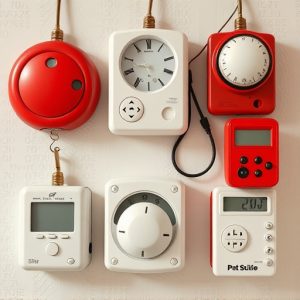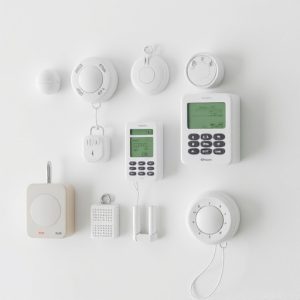Portable Panic Buttons with Monitoring: Safety Features and Sounding Distances
Portable panic buttons and monitoring services offer comprehensive safety for various scenarios. The…….
Portable panic buttons and monitoring services offer comprehensive safety for various scenarios. These devices feature powerful 105-120 dB personal alarms that can deter threats up to 500-800 meters, ensuring quick assistance during emergencies. GPS tracking provides real-time location data, enhancing safety in remote areas or when solo activities are involved. With two-way voice communication and emergency deployment, these tools offer peace of mind, addressing daily well-being to extreme situations, making them indispensable for security and tranquility.
In today’s world, personal safety is paramount. Portable panic buttons equipped with monitoring services offer a powerful solution for individuals seeking peace of mind. This article explores the multifaceted benefits of these compact devices, from their advanced features to the critical role monitoring services play in enhancing personal security. We’ll also delve into the effectiveness of personal alarms and how they can provide assistance when you need it most, answering questions like “How far does a personal alarm sound?”
- Understanding Portable Panic Buttons: Features and Benefits
- The Role of Monitoring Services in Personal Safety
- How far does a personal alarm sound? A Comprehensive Overview
Understanding Portable Panic Buttons: Features and Benefits
Portable panic buttons are compact, personal alarm devices designed for safety and peace of mind. These innovative tools offer a range of features tailored to various situations, from outdoor adventures to everyday use. One notable aspect is their ability to emit powerful personal alarm sounds, sometimes up to 120 decibels, ensuring that the user’s distress signal is loud enough to attract attention quickly.
The benefits are multifaceted: they provide an easy-to-access means of self-protection, offering users a sense of security and control. With some models featuring GPS tracking and monitoring services, individuals can stay connected and ensure prompt assistance in emergencies. This technology allows loved ones or emergency responders to track the user’s location, enhancing safety further, especially during solo activities or when venturing into remote areas.
The Role of Monitoring Services in Personal Safety
Monitoring services play a pivotal role in enhancing personal safety, especially when paired with portable panic buttons. In today’s digital era, where immediate assistance is just a button press away, these services ensure that help can arrive swiftly and precisely. When activated, a portable panic button sends an alert to the monitoring service, which then leverages advanced technology like GPS tracking to pinpoint the user’s location. This capability is crucial in situations where someone may be unable to communicate or provide their exact position verbally, such as during emergencies in remote areas or when suffering from distress or injury.
Moreover, monitoring services can provide peace of mind by offering real-time updates and communication channels with emergency contacts. They often include features like two-way voice communication, allowing users to speak directly with operators who can coordinate assistance. The range at which a personal alarm can sound—often extending up to 1000 feet or more, depending on the device—ensures that help is summoned even in scenarios where direct visibility is limited. This comprehensive approach to personal safety addresses various concerns, from daily well-being to extreme emergency situations, making monitoring services an indispensable tool for individuals prioritizing their security and tranquility.
How far does a personal alarm sound? A Comprehensive Overview
Personal alarms, also known as panic buttons, are designed to attract attention and deter potential threats. The sound they emit can travel a significant distance, typically up to 500-800 meters (1,640–2,624 feet), depending on various factors such as the environment, terrain, and weather conditions. In urban areas with high buildings, the alarm’s range might be reduced due to echoes and noise pollution, while open spaces allow the sound to travel further.
The volume of a personal alarm is measured in decibels (dB). Most devices range from 105 to 120 dB, which is loud enough to startle an assailant and alert nearby people or authorities. Some advanced models even incorporate LED flashlights, stun features, or GPS tracking for enhanced safety and location accuracy during emergency situations.
Portable panic buttons equipped with monitoring services offer unparalleled peace of mind, ensuring immediate assistance during emergencies. By combining advanced technology with human oversight, these devices provide a powerful solution for personal safety. Understanding the features and benefits of portable panic buttons, along with the crucial role of monitoring services, highlights their potential to protect individuals both near and far, especially when considering the distance a personal alarm can sound and the help it can bring.


